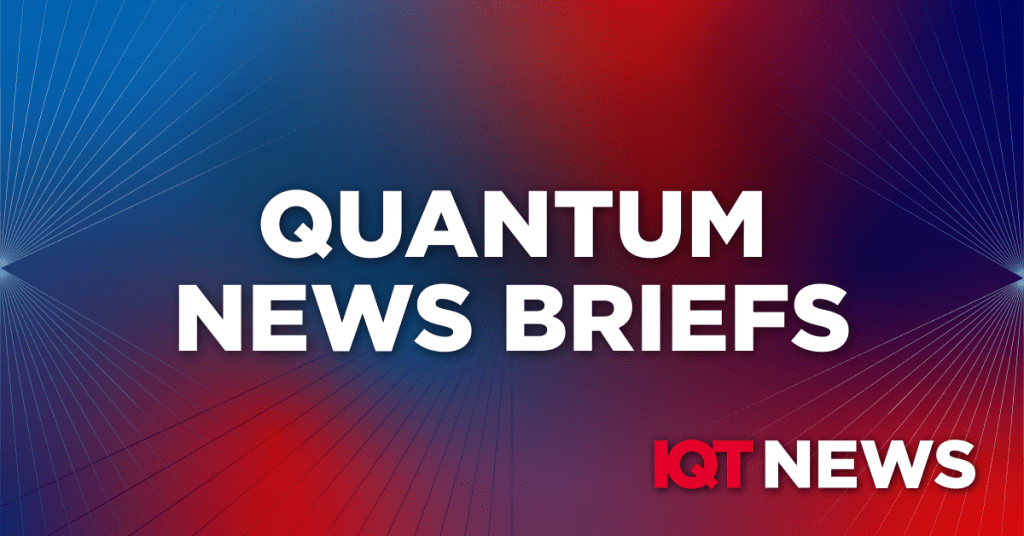Quantum News Briefs: April 23, 2024: Press release summaries below:
Toshiba Europe and Single Quantum partner to provide extended Long-Distance QKD deployment capability
Toshiba Europe Ltd. and Single Quantum B.V. have successfully collaborated to extend the transmission range of Quantum Key Distribution (QKD) technology, achieving distances over 300 kilometers on a single fiber link. This development leverages Toshiba’s advanced QKD systems and Single Quantum’s superconducting nanowire single-photon detectors (SNSPDs) to ensure secure quantum communication over extended distances, addressing the challenges of optical loss in fiber links. The integration of these technologies enables quantum-secure communications without the need for additional infrastructure or trusted nodes, which are impractical in remote or sensitive environments. This breakthrough could significantly impact sectors like security and telecommunications by enhancing the accessibility and efficiency of quantum-secure communications. The press release was announced in tandem with the IQT the Hague conference in the Netherlands.
Pacific Northwest National Laboratory researchers spring simulations forward with quantum computing
A new quantum algorithm developed by Nathan Wiebe, a joint appointee at Pacific Northwest National Laboratory and the University of Toronto, in collaboration with Google Quantum AI and Macquarie University, offers a faster and more efficient way to simulate coupled harmonic oscillators—systems prevalent in nature found in everything from mechanical structures to atomic bonds. Published in Physical Review X, this algorithm can simulate complex oscillatory systems on quantum computers, providing an exponential speedup over classical algorithms. This innovation maps the dynamics of these oscillators to a Schrödinger equation, enabling the use of far fewer quantum bits and operations than traditional methods. The researchers also explored the theoretical implications, suggesting that these oscillators could simulate arbitrary quantum computing processes, reinforcing the computational superiority of quantum over classical systems for such tasks.
Juniper Networks Joins the Quantum Internet Alliance (QIA)
Juniper Networks has joined the Quantum Internet Alliance (QIA) Technology Forum, marking a significant step in its commitment to advancing quantum internet technology. The announcement was made at the Inside Quantum Technology event in The Hague. Melchior Aelmans, representing Juniper Networks, signed the membership papers alongside QIA’s Stephanie Wehner and Vlora Rexhepi – van der Pol. As a new member of the QIATF, Juniper Networks is now part of an open forum that includes industry leaders, academic institutions, and other key stakeholders dedicated to developing, deploying, and expanding the quantum internet ecosystem globally.
IDTechEx Release New Global Quantum Technologies Market Report
IDTechEx, a leader in independent market research, has released a new report titled “Quantum Technology Market 2024-2034: Trends, Players, Forecasts”, which projects significant growth in the quantum technology sector, with an anticipated compound annual growth rate (CAGR) of 25% over the next decade. The report delves into the nuances of the quantum technology industry, which utilizes nano-scale physics to innovate in computing, sensing, and communications, offering substantial improvements over traditional technologies. This detailed analysis covers the spectrum of quantum technologies, including quantum computing, quantum sensing, and quantum communications. It features forecasts, over 50 company profiles, national strategies, and funding reviews. The report aims to understand the emerging opportunities, technological benchmarks, and strategic insights that can guide investments and development in this rapidly evolving field.
In Other News: Scientific American article: “Quantum Computers Can Now Run Powerful AI That Works like the Brain”
According to a recent Scientific American article, a new study published in “Quantum” demonstrates the potential of quantum transformers, a quantum computing adaptation of the traditional AI transformer model known for powering AI systems like ChatGPT. The research team, led by Jonas Landman at the University of Edinburgh and QC Ware, adapted a medical analysis transformer to sort retinal images, showing that quantum transformers could achieve accuracy levels comparable to classical models while potentially using fewer resources. Initial simulations on quantum emulators showed a categorization accuracy between 50 and 55 percent, and further tests on real quantum hardware yielded similar results, albeit with a limited number of qubits. This development allows quantum transformers to handle complex problems in chemistry and materials science more efficiently than current classical models, suggesting a future where quantum and classical systems could work in tandem to optimize data processing and energy consumption.
In Other News: Ars Technica article: “Meet QDEL, the backlight-less display tech that could replace OLED in premium TVs”
As OLED technology becomes increasingly accessible, industry focus is shifting towards next-generation display technologies like Quantum Dot Electroluminescent (QDEL) displays, also known as NanoLED, a new Ars Technica article highlights. This promising technology, highlighted in a recent whitepaper by Nanosys and Sharp Display, uses quantum dots directly as the light source, eliminating the need for backlights and potentially offering wider color spaces, increased brightness, and greater affordability than current QD-OLEDs. Expected to be commercially available by 2026, QDEL aims to provide better longevity and resistance to burn-in, positioning itself as a potentially superior alternative for high-end consumer displays. The progress in QDEL tech, alongside advancements in Micro LED, indicates a dynamic future for consumer display technology, each offering distinct benefits in brightness, durability, and manufacturing costs.
